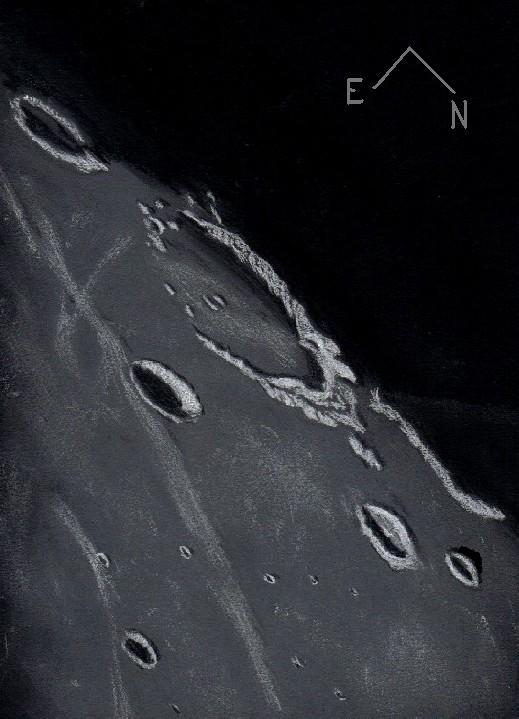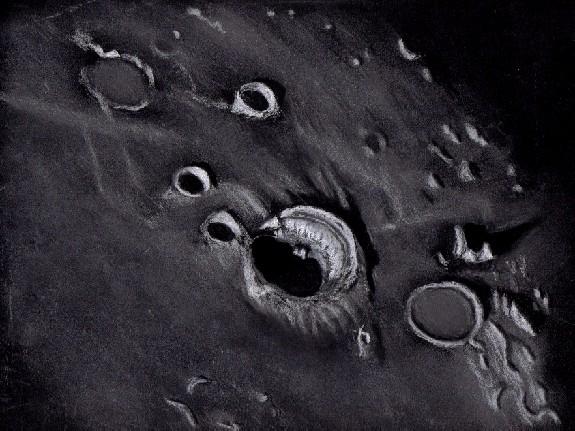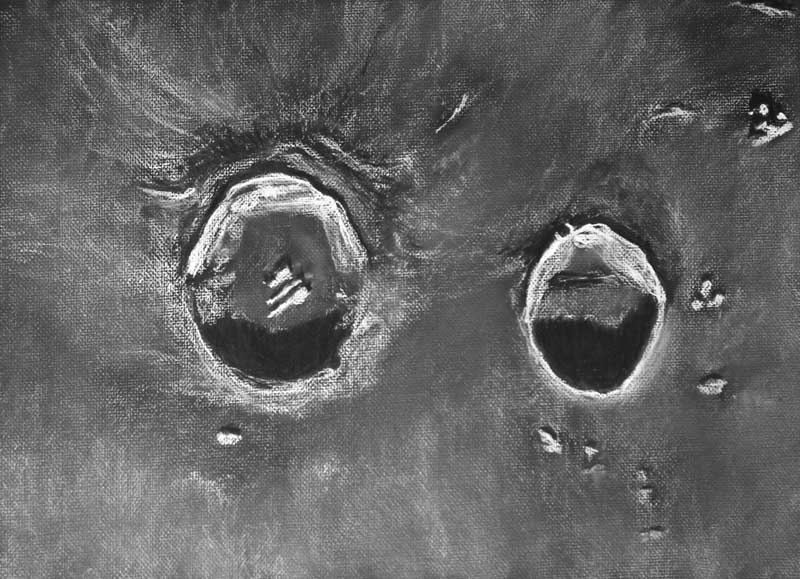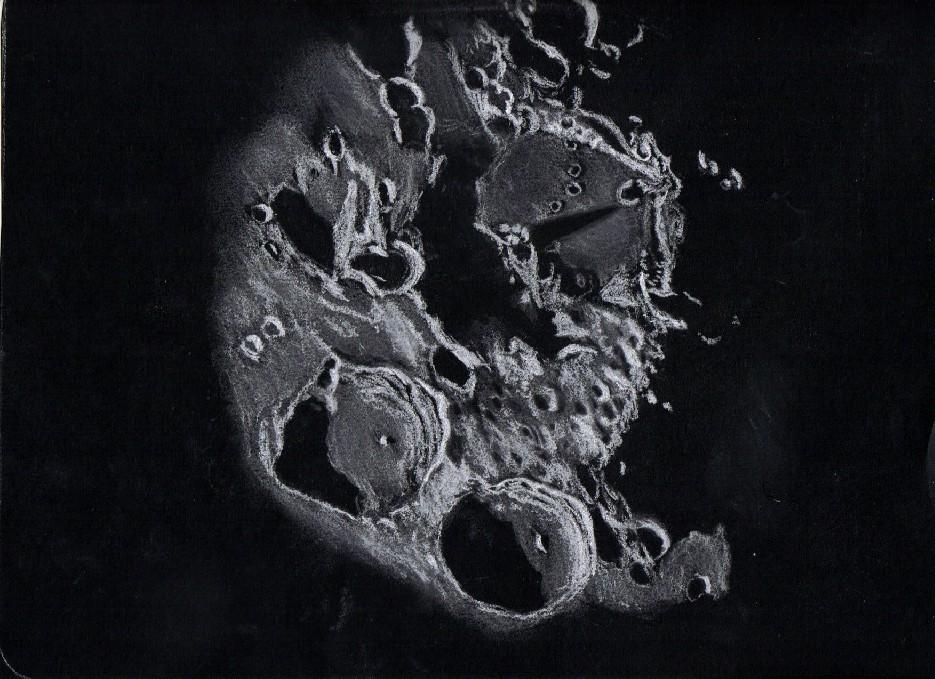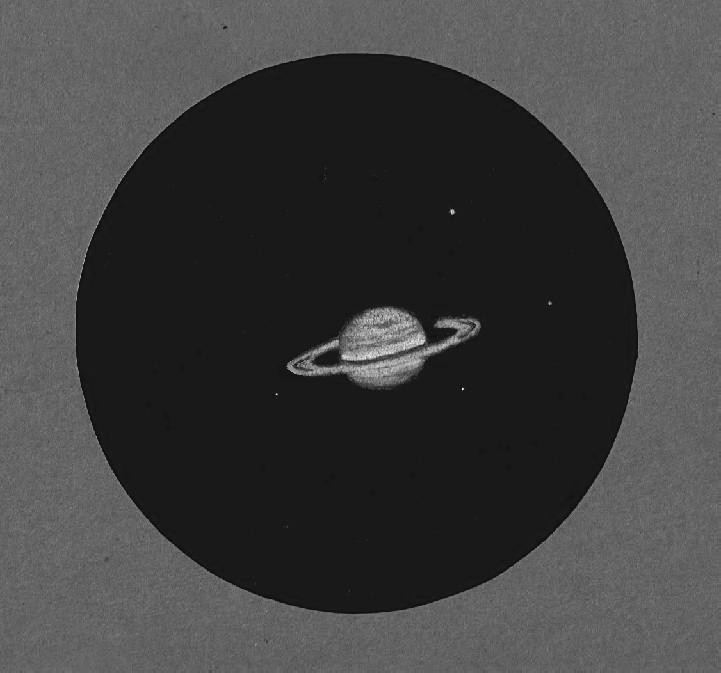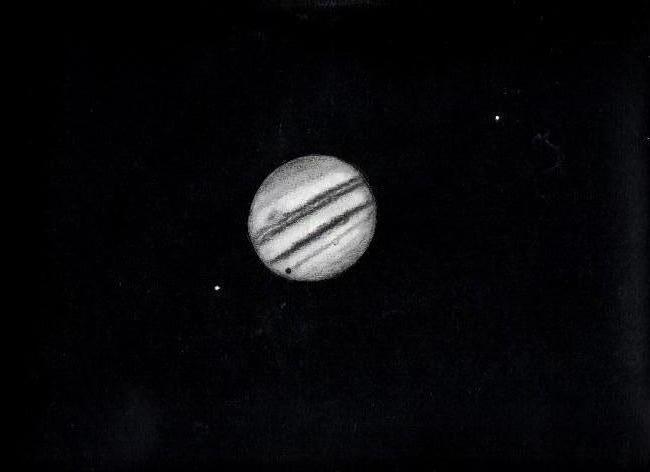
Jupiter with Ganymede and Io
Sketch and Details by Frank McCabe
While spending most of the evening and night outdoors under the stars, I had an opportunity to sketch planet Jupiter as I awaited the moonrise.
Jupiter was not very high above my southeastern horizon but the seeing was quite good for my location. I was able to see the great red spot not far from Jupiter’s preceding limb on the southern edge of the south equatorial belt. The belt appeared bisected over most of the viewing area. Superimposed on the north temperate belt I was able to clearly see the shadow of Ganymede near the preceding limb. The satellite was lost in the front of Jupiter to the east of the shadow as it made its transit in front of the giant. Also visible in the field of view were moons Europa and further from the planet on the other side Io.
Sketching:
For this sketch I used: black Strathmore 400 Artagain paper, 8”x 11”, and a white Conte’ pastel pencil. I added the moons to the black paper using the white pastel pencil. The sketch of Jupiter was done on white sketching paper using HB, 2B and 4B graphite pencils an eraser shield, and a blending stump. I carefully cut the sketch of Jupiter from the white paper and using a small piece of double sided carpet tape added it to the black paper. Brightness was slightly decreased (-4) and contrast increased (+3) after scanning using Microsoft Office Picture Manager.
Telescope: 10 inch f/5.7 Dobsonian and 6mm eyepiece 241x
Date: 6-23-2008 4:25 – 4:55 UT
Temperature: 15°C (59°F)
clear, calm
Seeing: Pickering 7.0
Frank McCabe




